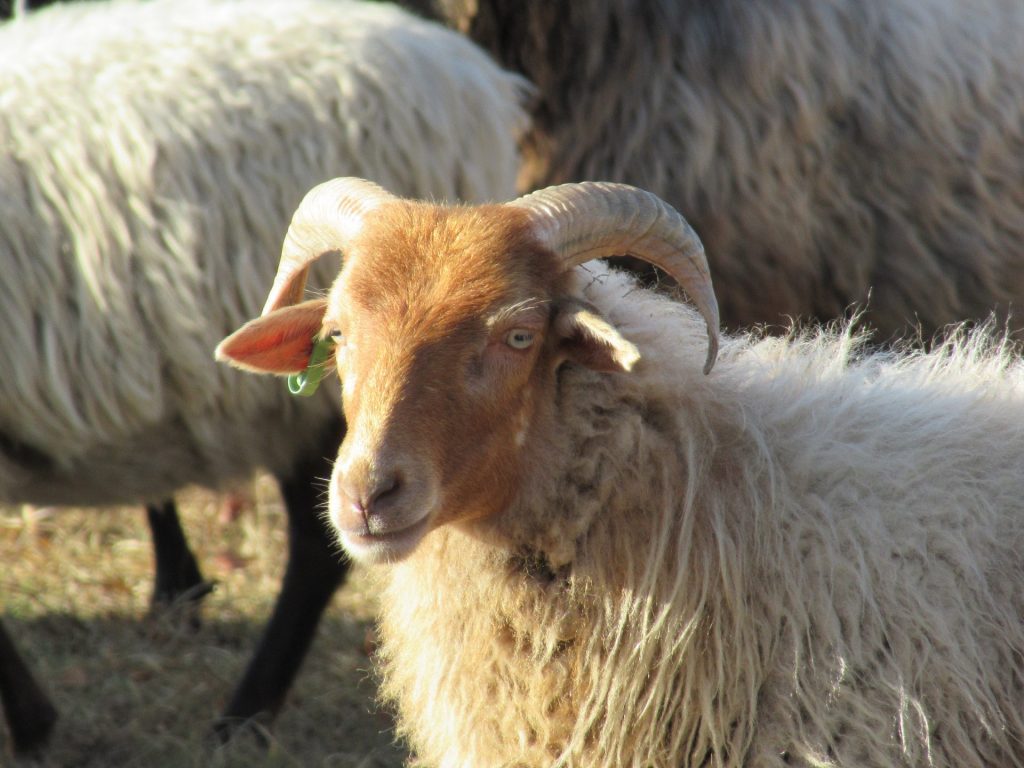
Last year, I bought a bag of Drenthe Heath sheep wool. During our walks, we often see flocks of these sheep at work in one of our national parks. They are kept for conservation grazing, and their work is eating young trees and shrubs. Without them, our open heathlands would turn into woodland in no time.
Drenthe Heath sheep are not primarily kept for their meat or fleeces, but their meat seems to be good (I’ve never tasted it) and they produce fleeces of 1 to 2 kg per sheep. I know that their wool is generally considered to be of poor quality, but still I wanted to experience for myself what it feels like, how it spins up, and what I could knit with it.
An entire fleece would be way too much for me, so I bought a bag with small quantity of prepared wool.
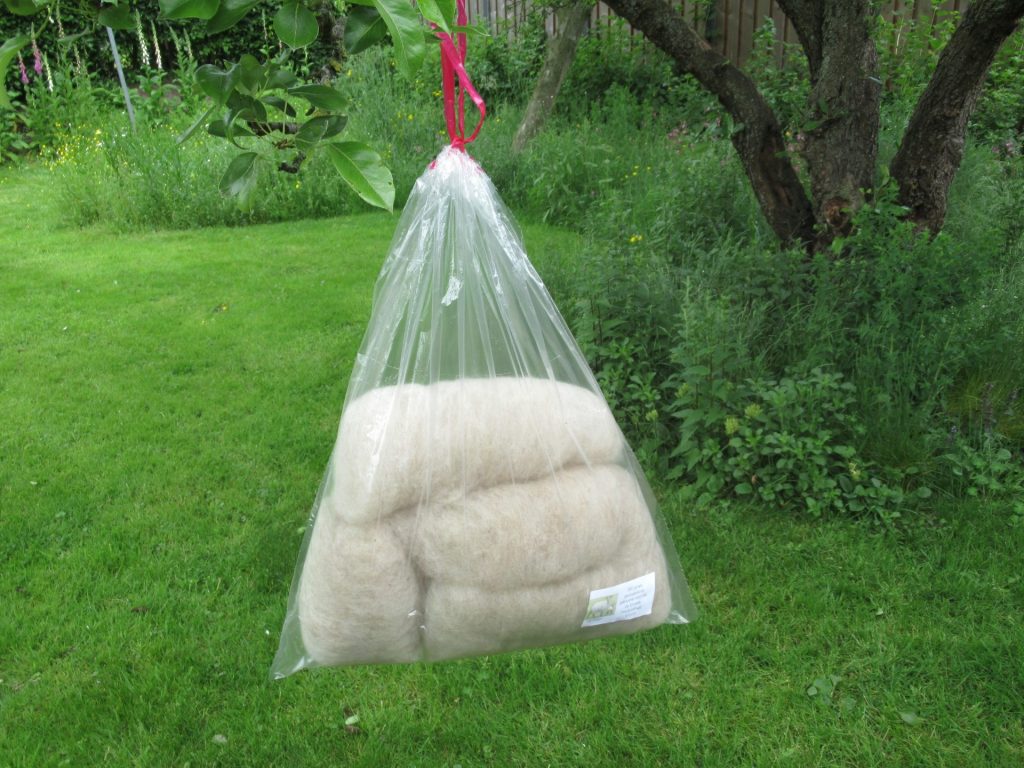
Taking the wool out of the bag, I saw that it contained five rolled-up batts, or large rolags.
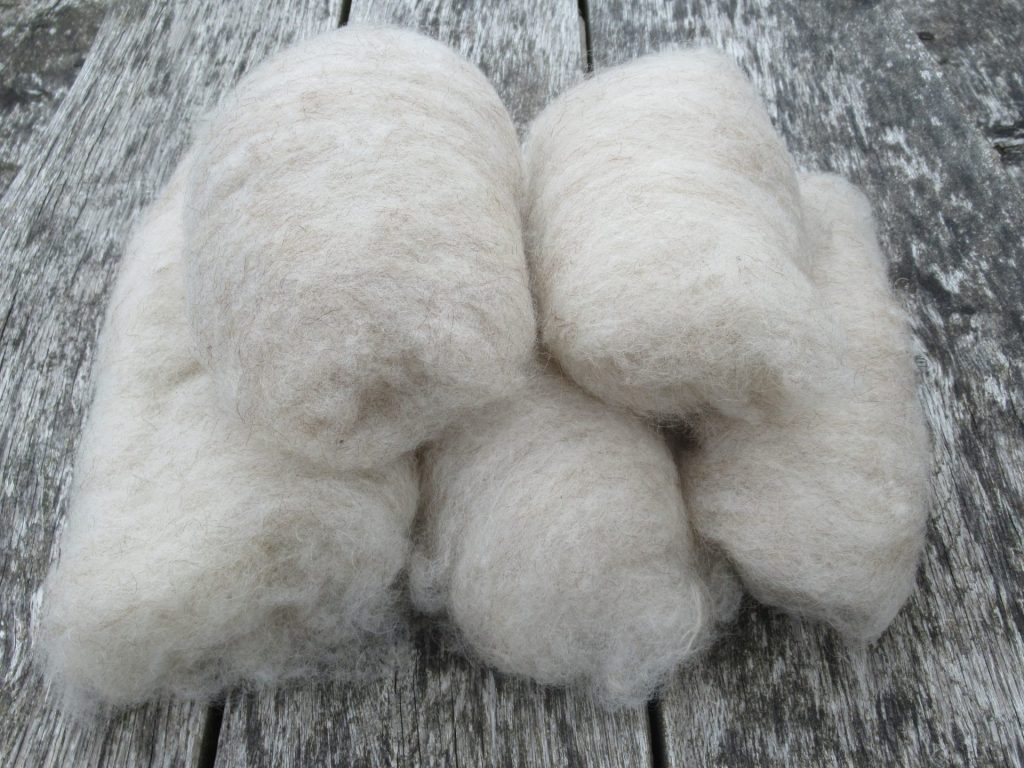
The label on the bag said, ‘150 grams. Washed and carded Drenthe Heath Sheep Wool, €10,00.’ There was also a business name on the label, but no website or contact information.
Asking around, I found out who had done all the washing and carding for me, and also that this person was going to be present at a crafts fair. Bringing a tuft of wool, I visited her stall at the fair to learn a bit more. Although she was busy selling her wares, she took the time for a chat. One of the things she said about the wool was, ‘there is quite a bit of kemp in it.’
Kemp???
‘Yes. If you look at the wool closely, you can see some dark fibres mixed in with the lighter wool. That is kemp.’
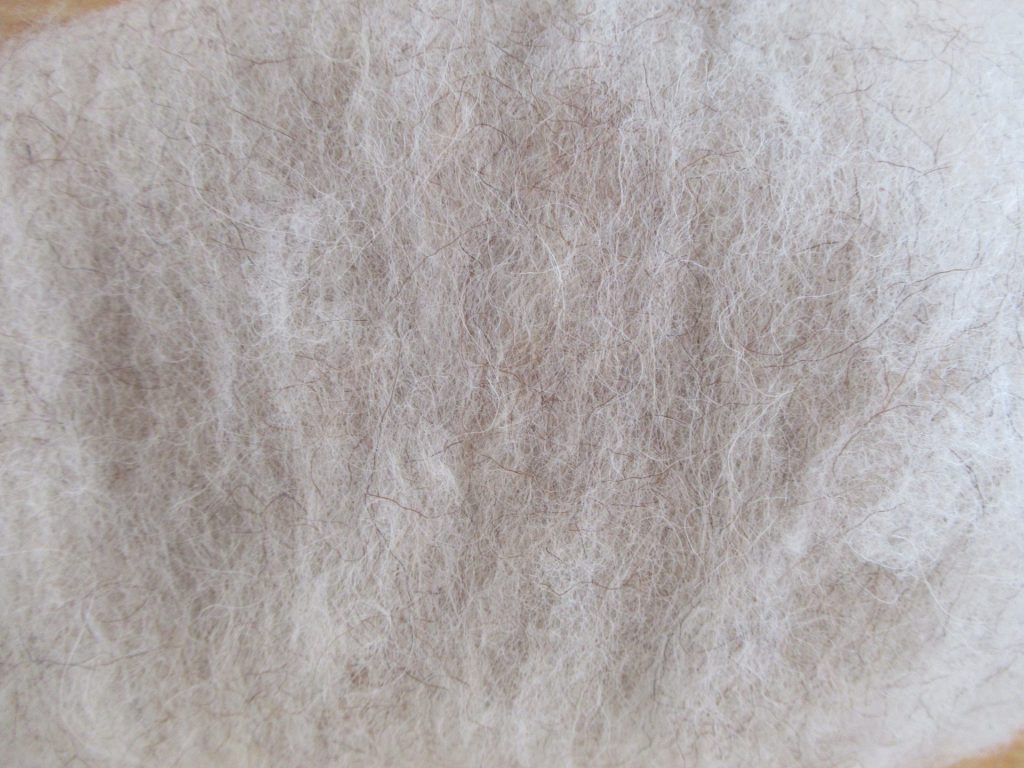
Back home I looked for more information about kemp. On p. 22 of The Spinner’s Companion Bobbie Irwin defines it as ‘Undesirable fiber found in some fleeces, especially those of more primitive breeds.’ I also found out that kemp isn’t actually wool but hair. I went on to read much, much more, including that sheep have primary and secondary follicles. It was all very interesting, but would go much too far to repeat it all here.
Summing up, all sources agree on one thing – kemp is bad news!
Only Robson and Ekarius are slightly milder in their great tome The Fleece & Fiber Sourcebook. On p. 9 they state, ‘Kemp isn’t all bad, though. Its very nature of odd dye absorption is sometimes useful, as in the production of true tweeds.’
In spite of all the bad news, I started spinning.
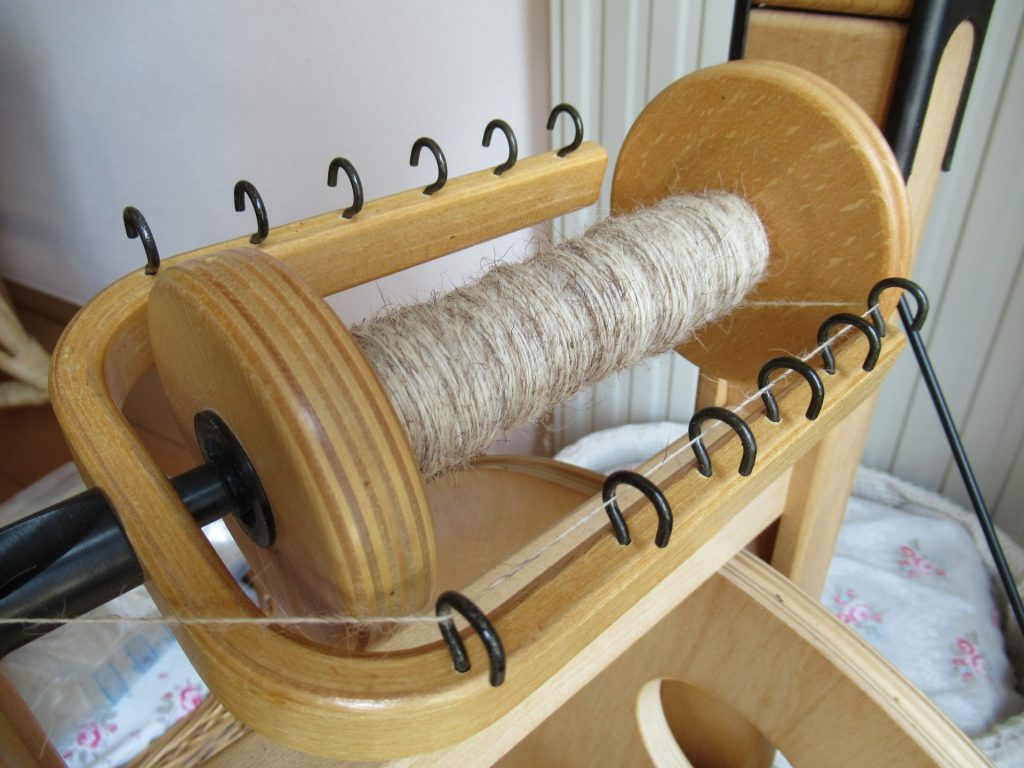
When I spin, I always have a tea towel on my lap, to protect my clothes and catch any dirt and fibres coming from the wool. For light fibres I use a dark tea towel, and for dark fibres a light one. This helps me to see what I’m doing.

I divided the wool into two equal portions and spun it into a fairly thin thread. During the spinning, the wool shed a lot of kemp. I put some on a sheet of white paper to take a closer look.

So this is kemp – short, rough, slightly curly hairs that make yarn prickly and don’t take dye well.
After spinning two bobbins full, I plied everything into a simple 2-ply yarn. While I was plying even more kemp fell out, but quite a bit stayed in too.
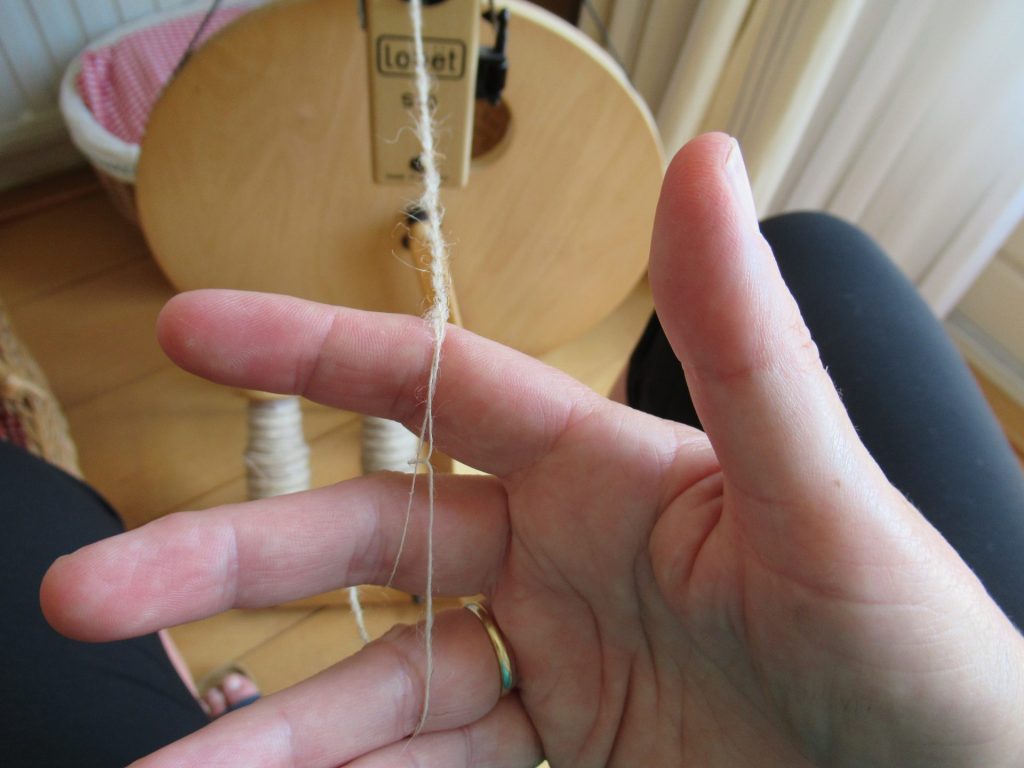
Drenthe Heath sheep can vary in colour, but their fleeces are mostly off-white. They are fairly small, hardy animals and have apparently lived in this region from about 4000 BC. My wool came from an animal like this one:
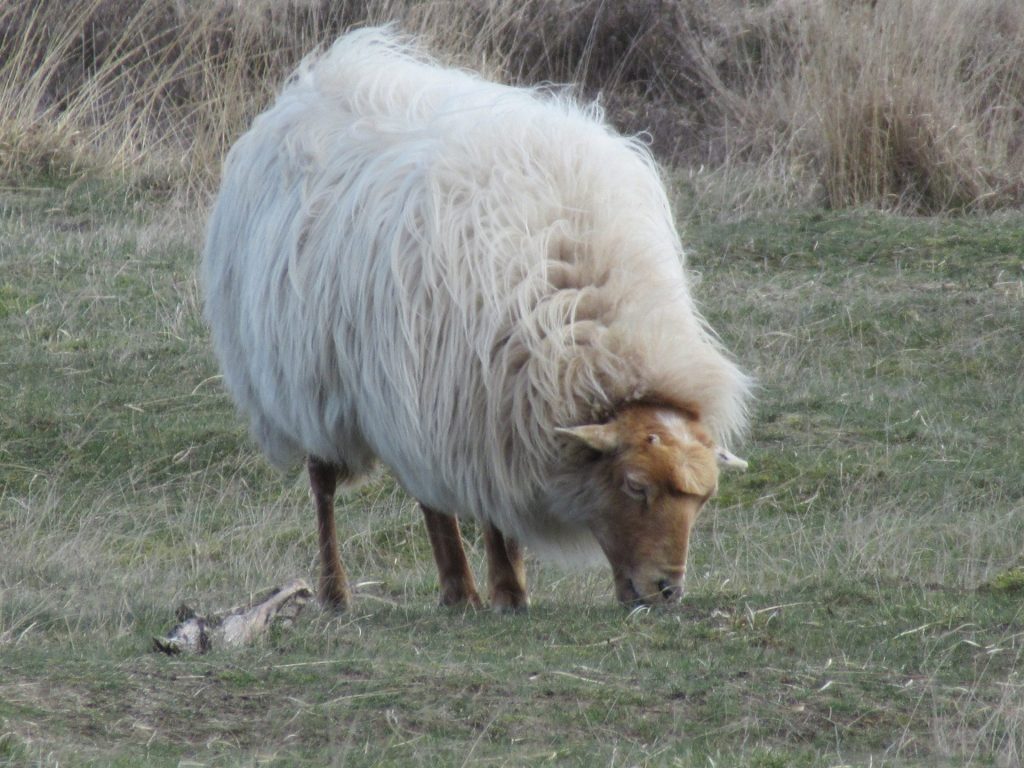
Although this isn’t the nicest wool I’ve ever spun, spinning 150 grams of Drenthe Heath Sheep wool has brought me a number of things:
- In-depth knowledge of kemp
- Several enjoyable hours of meditative treadling and drafting
- A closer connection with these animals that have lived here for thousands of years
- 135 gr/422 m/460 yds of yarn
The yarn is a sort of heathered oatmeal shade and feels, let’s say, rustic. I like it more than I expected, I have to say, but I don’t think I’d use it for something to wear.
I am also left with several question marks:
- Would it have been possible to remove the kemp entirely? How?
- If so, would the yarn still be scratchy?
- Would it have been better if I’d spun it into a thicker, loftier yarn?
- And last but not least – what could I knit with it? Hmmmmm…

If you’d like to read more about Drenthe Heath sheep, I’ve written about them here and here. And there is more information on the website of the Drenthe Heath sheep breeders’ association (mainly in Dutch, but with an English summary).
Hallo Marijke,
dankjewel voor je avontuur met Drentse Heideschaapwol.
Kemp kan ook spierwit zijn, ik had in het project Pleed een vacht waarvan ik dacht dat er stripjes wit plastic in zaten, zo dik kunnen die vezels zijn.
Er was groot verschil in zachtheid van de vachten van de Leeuwarder schaapskudde. Het onderhaar is fijne zachte wol. Als je dat alleen zou willen gebruiken moet het voor het kaarden gescheiden worden.
De tentoonstelling in Leeuwarden van Pleed is te vinden op http://www.pleed.nl
Groeten!
Gieneke
Dank voor jouw ervaringen met de wol. Leerzaam! For those who don’t read Dutch, Gieneke mentions an exibition about a project using local wool in Friesland that has been spun and made into blankets. Follow her link if you’d like to know more.
How interesting! I haven’t really put much thought to the process of creating yarn so this was informative. Shame on me, all these years of knitting.
This reminds me of a classic Swedish children’s book called Pelles nya kläder (Pelle’s new clothes) by once very well known writer and illustrator Elsa Beskow. The book describes how Pelles two grandmothers and his mother transform the fleece of his sheep into a stylish suit. The pictures are lovely, must hunt for it in my youngest son’s bookshelf.
Oh well, one can’t do everything. Perhaps you could keep spinning in mind as something to look forward to when you retire ;). Thank you for the book tip. I know that it’s been translated into Dutch but have never actually read it. I’m going to look if I can borrow it from the library.
Hallo Marijke,
Dank voor het delen, ik heb weer wat geleerd over wol en kemp.
Ik verwacht binnenkort de vacht van een Drents Heideschaap, Lobke, mijn adoptieschaap. Ben na het lezen van jouw blog nog meer zeer benieuwd hoe de vacht eruit ziet.
Groethes,
Mariek
Ach, wat leuk, adoptieschaap Lobke. Ga je er weer een vachtje van vilten?